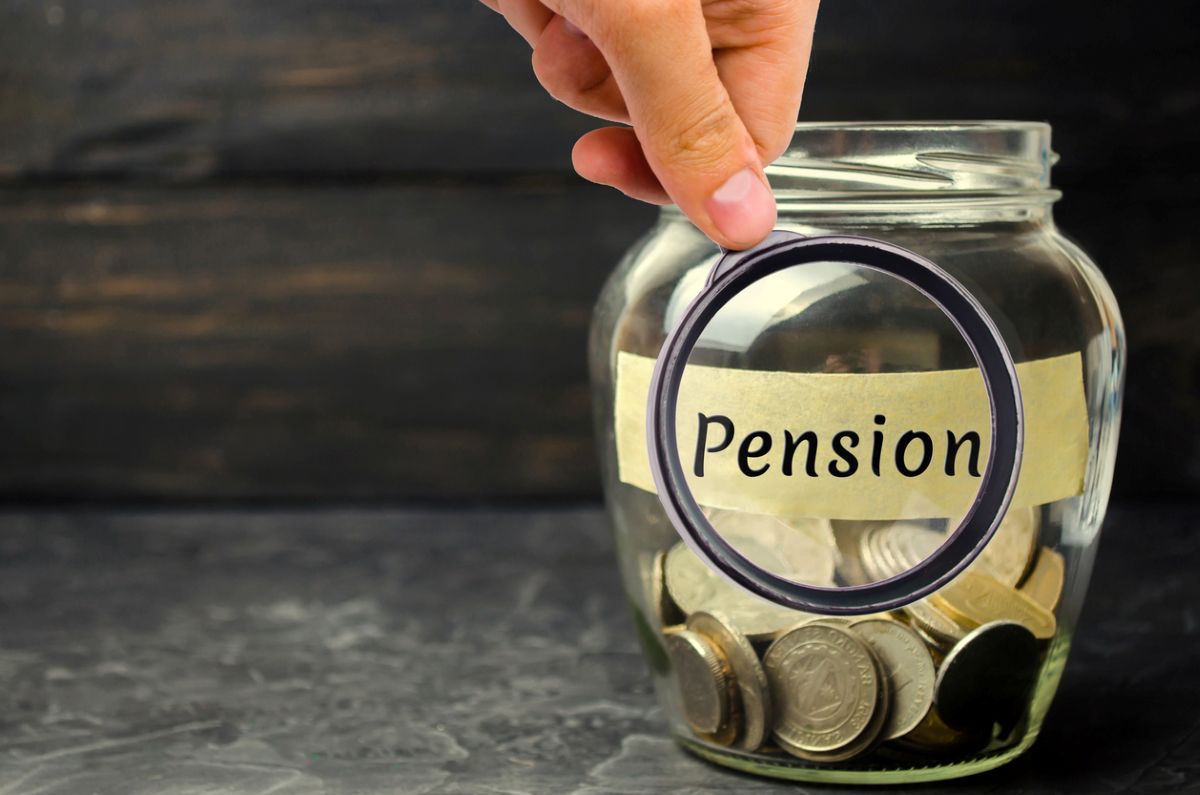What is a good pension pot?
A good pension pot will look after you throughout your retirement. But what is a good pension pot – how much money will you need to rely on once you’ve retired, and how do you know how much to put in? More to the point, what is the average UK pension pot?
Arrange your free initial consultation
What does a good pension pot look like?
There’s no single straight answer to the question of what a good pension pot looks like, as there are a number of different factors to take into account. For example, your own personal variables include your age, when you’re hoping to retire, the type of pension you have, and the amount of money you’re expecting to live on once you’ve stopped working.
If you have a defined contribution pension, which is the most common type of pension in the UK, your pension’s value once you’re retired depends on what you’ve paid into it, any fees taken by your provider, and how your investments have performed.
What is the average UK pension pot?
According to the Financial Conduct Authority (FCA), the average pension pot for those aged 55 and over was around £107,300 as of 2022, although this varies widely by age group and region. However, this figure does not include the value of defined benefit pensions or the State Pension.
The Pensions and Lifetime Savings Association (PLSA) has also published Retirement Living Standards to help people gauge how much they might need, depending on the lifestyle they want.
- For a ‘moderate’ retirement lifestyle, the PLSA suggests a single person would need around £31,700 per year, which includes the State Pension.
- For a ‘comfortable’ retirement, which includes a little more luxury, a single person would need around £43,900 according to the report.
- This would require a private pension pot of around £605,000 and £838,000 respectively, assuming retirement at age 65
- The figures also assume an annuity rate of circa 5.24%. and full state pension
How much to put into your pension pot?
It can be tricky to know how much to put into your pension pot when deciding what sort of contributions to make. This is perhaps the main thing to consider, but it’s also important to think about how much you’ve got in there already and what other sources of income you’re expecting post-retirement. It’s often recommended to put about 15% of your income – pre-tax – into your pension every year while you’re working, but that might not always be possible.
Find out how much is in your pension pot at present – if you’ve got old pension pots from previous workplaces, you can track them down. If you have a financial adviser, speak to them about the merits of combining your pension pots, also known as ‘pension consolidation’. At this point, your pension provider should be able to provide you a simple projection of what your pension pot may be at the age you selected you wish to retire. As their projections are based on limited assumptions and are not personalised, you might also want to get an independent forecast from a financial adviser, like our TPO pension specialists.
Once you’ve got a projection, you can discuss your situation with your adviser, who will be able to let you know whether your pension pot size will meet your retirement needs. If not, they can help you decide on how to increase your monthly contributions at a sensible rate or change your investments in your pension to increase or decrease the investment risk you’re willing to take.
Retirement Calculator
A useful tool to get a basic understanding of what your future retirement plans look like is our retirement calculator. From your own personal circumstances , you will be able to forecast an estimate of the pension income you will get when you retire and receive a target retirement income to aim for based on your choices.
Am I saving enough into my pension?
How do I work out if I’m saving enough into my pension? Here's how to make a start:
- Consider your preferred annual income in retirement, and any other guaranteed sources of income in retirement you may have, such as a state pension.
- Subtract your guaranteed income from your preferred income, and you’ll see how much you’ll need to make from other sources, including your pension pot.
- Through your workplace, you may have a final salary or defined benefit pension. These types of pensions can provide you with a guaranteed income for the rest of your life, and you can add it to your projected state pension to see how much you could earn when you’re retired.
If you’re not sure how much income you’ll need once you’re retired, you can make a few calculations to get a rough idea. Just start with your monthly expenditure at present, and then subtract regular costs that might not apply post-retirement; will you still be paying off your mortgage by then, for example? Then subtract other costs. If you’ve currently got dependent children who will be adults by the time you retire, consider how much you’d save as a result. Then, consider other savings you might be able to make, such as taking holidays during term time, and you should have a rough idea.
You might also need some extra money in retirement, whether that’s for treating yourself to luxuries you didn’t have time for while working, medical expenses and care costs as you get older, or helping your grandchildren through university or buying their first home. When saving, it’s best to include a safety margin, rather than just going for the bare minimum.
One last thing to consider is how long your retirement might be. People retire at different ages, and if you retire later, you might not need to save as much, despite potentially being able to save more.
If you’re unsure, use 65 as the baseline. Then, estimate how long you might live – you can use a life expectancy calculator for this. According to the Office for National Statistics (ONS), life expectancy at age 65 is now around 19.8 years for men and 22.5 years for women in the UK, based on 2023 data. Of course, this also depends on your lifestyle and health.
What is the 50 – 70 rule?
The 50 – 70 rule is a quick estimate of how much you could spend during your retirement. It suggests that you should aim for an annual income that is between 50% and 70% of your working income.
In other words, if you are earning £100,000 then in retirement you will want to achieve somewhere between £50,000 and £70,000.
This rule should not be relied on as in-depth retirement planning, rather it is the first step in calculating and deciding upon what your ideal retirement expenditure should be. Realistically you will want to look at your employed income and expenditure and then think about what will changes in retirement, for instance will you spend less money as you stop commuting? Or more money on holidays? This should then help you to have a more personalised expenditure plan for your retirement.
How to check my pension pot
It pays to check your pension pot size on a fairly regular basis, so that you can ensure you’re on track to meet your retirement needs. If there’s an issue, but you spot it earlier, you should be able to fix it with less difficulty.
First of all, it makes sense to request a State Pension statement – you can do so online, over the phone, or by post, as long as you’re aged over 16 and are more than 30 days away from your State Pension age. Then, if you belong to a defined benefit or final salary pension, your provider will usually send over a benefit statement each year, but you can ask for one if you need to. On the statement, you’ll be able to see how much you’re likely to receive with options surrounding whether or not you take some tax free cash. With regards to any defined contribution pensions you have, your annual statements will give you an idea of your future pot value, and the expected retirement income you’re thought to be in line to receive once you retire assuming you purchase an annuity.
It’s worth bearing in mind that you might have other sources of retirement income too, be they investments or savings. These could include a property that you rent out, share-based investments, or cash deposits, and you may be able to get statements for these, too.
Saving for retirement can be stressful, and it’s not always easy to know how much money to put aside while you’ve got immediate expenses to consider. If you’re uncertain about whether you’re on track or simply want reassurance that your plans are realistic, a conversation with a financial adviser can be invaluable. Get in touch with The Private Office for a free initial consultation with one of our financial advisers.
Arrange your free initial consultation
This article is intended for general information only, it does not constitute individual advice and should not be used to inform financial decisions.
Investments and the income derived from them can fall as well as rise and you may get back less than you originally invested. Past performance is not a guide to future returns.
The Financial Conduct Authority (FCA) does not regulate cash flow planning, estate planning, tax or trust advice.
The information in this article is based on current laws and regulations which are subject to change as at future legislations.
A pension is a long-term investment. The value of an investment and the income from it could go down as well as up. The return at the end of the investment period is not guaranteed and you may get back less than you originally invested.

